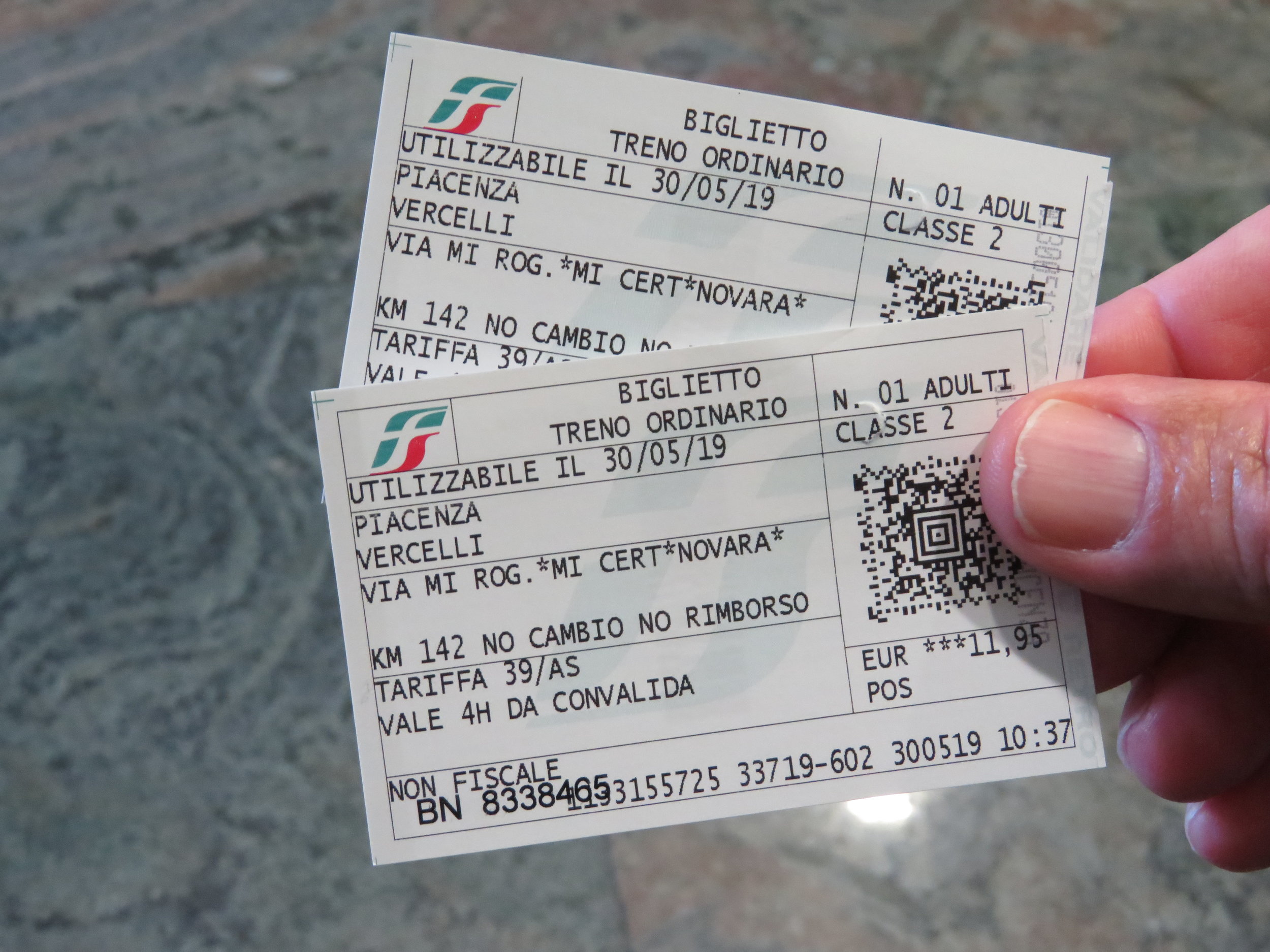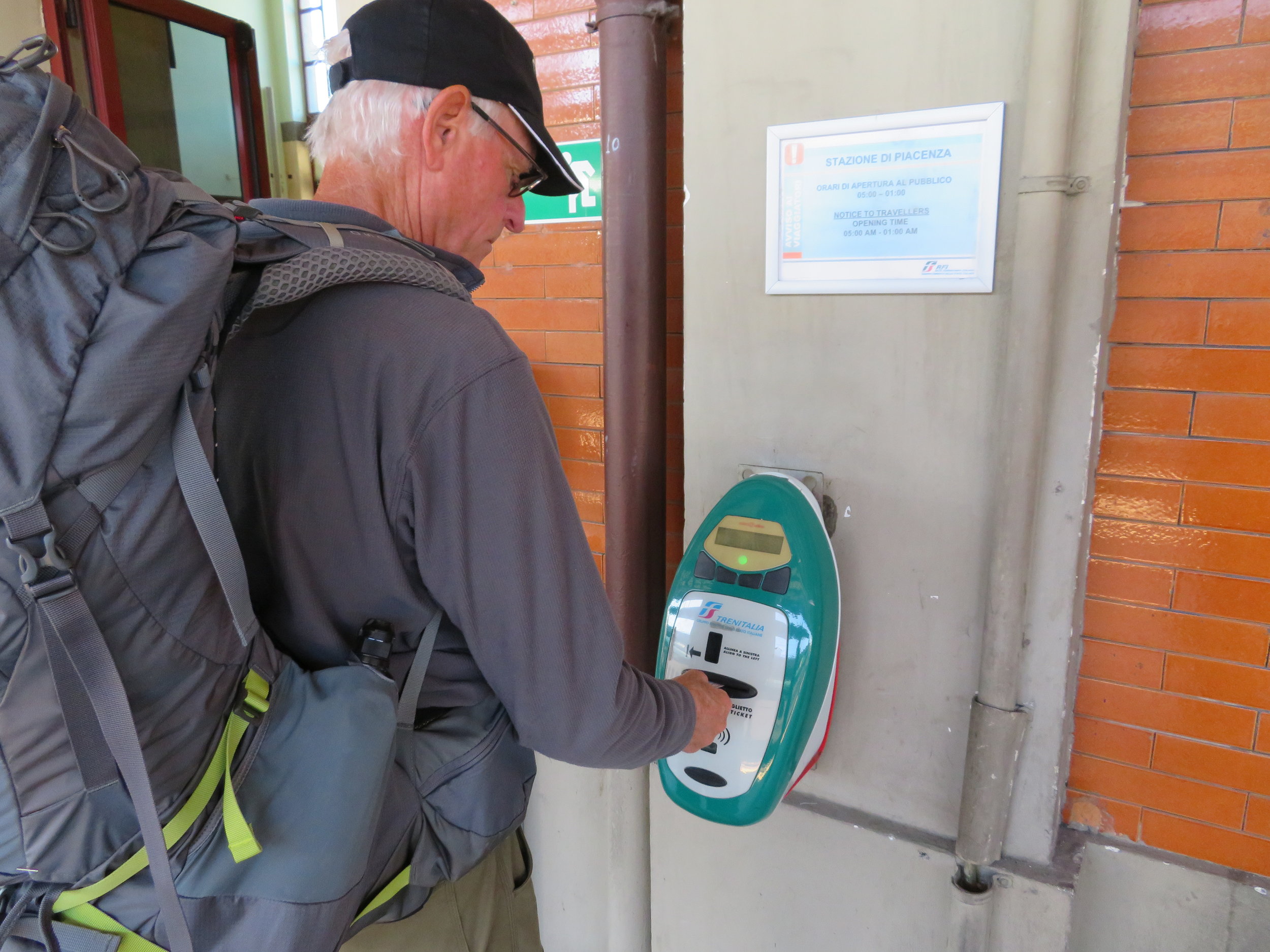Blue View - Riding the Rails... Italian Style
/Because of our 'Plan B' days, we've been riding the trains here in Italy quite a lot. In fact, I'm pretty sure I've spent more time on trains in the last few weeks than the sum total of my train riding experience prior to Italy. It's been somewhat of a learning curve, but I think we're starting to get the hang of it. Here are some of the things we've learned.
Tickets.
Obtaining train tickets can sometimes be a challenge. The larger stations have ticket offices and ticket dispensing machines, but many of the smaller stations don't.
Ticket machines. We found ticket machines in about two-thirds of the stations we've visited. They're slow but easy to use. Most take cash or credit cards, but some in the smaller stations only accept credit or debit cards.
Ticket office. The larger stations often have manned ticket offices. Just like working folk everywhere, they ranged from pleasant and knowledgeable to rude and unhelpful. We usually opted for the ticket machines.
Tabacchi ( tah-BACK-ee), a type of convenience store that sells chips, beer, soda, lotto tickets, cigarettes, etc. and sometimes train tickets. Bars that are located near a train station often sell tickets as well.
Online. The Trenitalia website is in several languages and quite easy to use. You can review timetables, check for delays, and do a host of other things, including, most importantly, buy electronic tickets. These don't need to be printed... you will receive a confirmation by email that you can download on your smartphone and show the conductor.
Phone Apps. Trenitalia also has apps for IOS and Android devices with much of the same functionality of their website. It's only downside is that it asks for a lot of information each time you buy a ticket, which can be frustrating when the internet connection is slow, your phone is getting low on power, and/or you're pressed for time.
Onboard. We saw small posted notices that indicated you can now buy tickets from the conductor onboard the train - assuming we translated the text correctly. There's a €5 fee in addition to the fare for doing so.
Validating a ticket
Validating tickets. When you buy a paper ticket, it must be validated before you use it. This is done by inserting each ticket into the small green validation machines. Try to remember to do this as soon as you buy it or when you enter the station. The machines are located in the station and sometimes on the train platforms. On more than one occasion, I've forgotten to validate our tickets in the station and discovered there wasn't a validation machine on the platform for track 76 (or so it seemed), and had to sprint (or the best imitation of a sprint that a 70 year old guy can manage) back to the station to validate it. Electronic tickets, BTW, don't have to be validated.
Train numbers. Make a note of the train numbers and times, especially for any connections. For some reason, this key information isn't shown on either the paper or electronic tickets. If you were planning a trip from Vercelli to Borgofranco, say, you might not know that you have to get on the train heading for Ivrea, then connect to the train to Aosta (which stops at Borgofranco). Without knowing the train numbers, it might take a few frustrating minutes figuring it out, perhaps missing your connection. Ask how we know this.
Connections. When buying a ticket, especially online or with the phone app, check the connections carefully. We sat at one tiny railway station watching a couple of trains roar by without stopping, only to discover that our connection was actually by bus a block away. We've since learned to look for the small icon next to the train number on the route planner to see whether it's a bus or a train symbol.
Other notes. On average, our tickets were checked about a quarter to a third of the time by a conductor on board. Just enough to keep everyone honest.
Hold on to your ticket after leaving train... sometimes they are checked at the station.
Finding the train
Electronic departure display
Hard copy display
Departure displays. Big stations have electronic displays in the station as well as on the platforms. Smaller stations may or may not have electronic displays on the platform, but always have hard copy displays with all the arrivals and departures for the day.
Departure displays, whether electronic or hard copy, show time of departure, train number, starting station, final station, and all stops. They also show the bin or binario number which is the track number.
Train identification. Very few trains have the train number or destination shown on the exterior. Listen carefully for the announcement which will give the origination, termination and train number. We found it difficult to understand most of the city names, but knew our numbers well enough to catch the train numbers and track numbers.
Getting to your platform. If the track number is anything except Binario 1, you'll have to cross the tracks to get to it. Most of the larger stations have underground tunnels (Sottopassagio) to reach the outer tracks and warnings not to cross the tracks... which was often ignored.
The tunnel leading to the other tracks
Unless, of course, when there’s no tunnel
Yellow line - don't you dare step across it like this scofflaw!
Riding the trains
Getting on and off. The doors usually don't open automatically. Either there's a button to push or a handle to turn.
Push the button to open the door
The doors may not open by themselves, but they do close automatically.
Prossima fermata. The newer trains often have displays aboard informing passengers of the name of the next stop (prossima fermata in Italian). Sometimes the displays are accurate and helpful, sometimes they aren't used, and sometimes they're totally wrong. They are rarely found on the older trains used for the feeder lines. Since we can't depend on the displays to give us advance warning of our station, we always try to make note of the name of the station preceding ours, so that we can leisurely dislodge our packs from the overhead, mount up and make our way to the door prior to reaching our stop. Much better than being surprised to see we've arrived at our station, then frantically rounding everything up and pushing our way through the incoming stream of passengers.
All in all, despite a few misunderstandings, miscues and frustrations, riding the rails in Italy has been an enjoyable adventure. The trains, in our experience, were reliable and mostly on schedule, and allowed us to continue making progress on the Via Francigena despite Marcie's shingles. She's doing better.. in fact, she was able to carry a pack, albeit slightly weight-reduced, on the last couple of legs.
As we move on to Switzerland and France, we're not sure how much travel we'll do on their train systems. Of course, we hadn't planned on any rail travel in Italy, and here we are, practically gurus on the subject, so you may see yet more Blue Views on riding the rails.
Next week we’ll talk about Italy’s coffee culture - they do know their coffee. Come join us…











